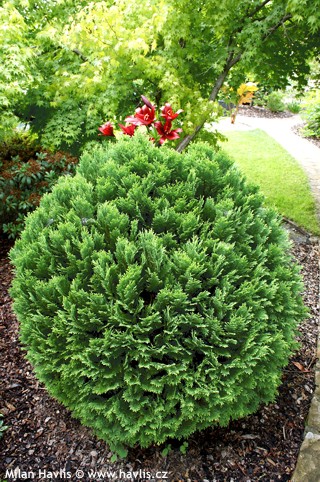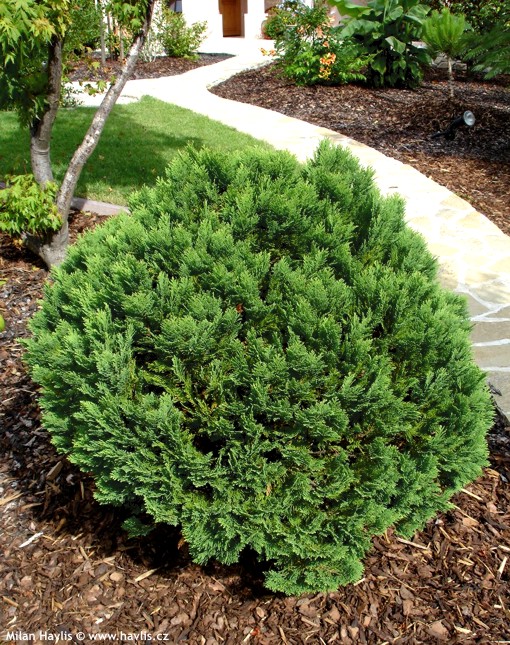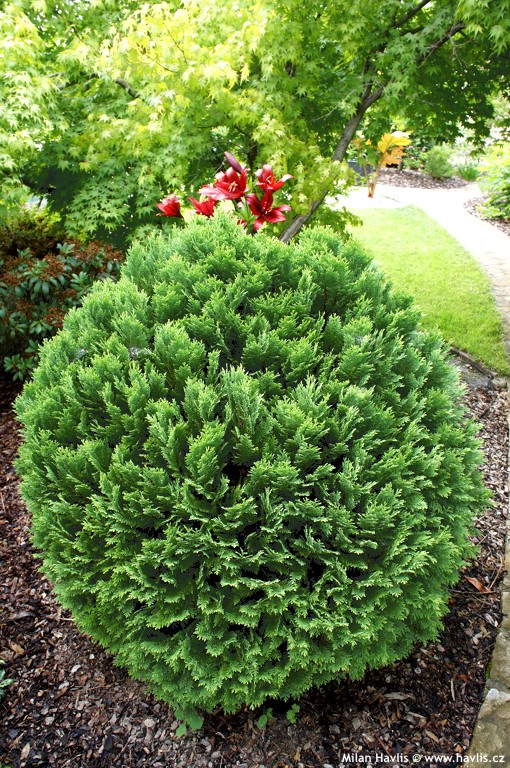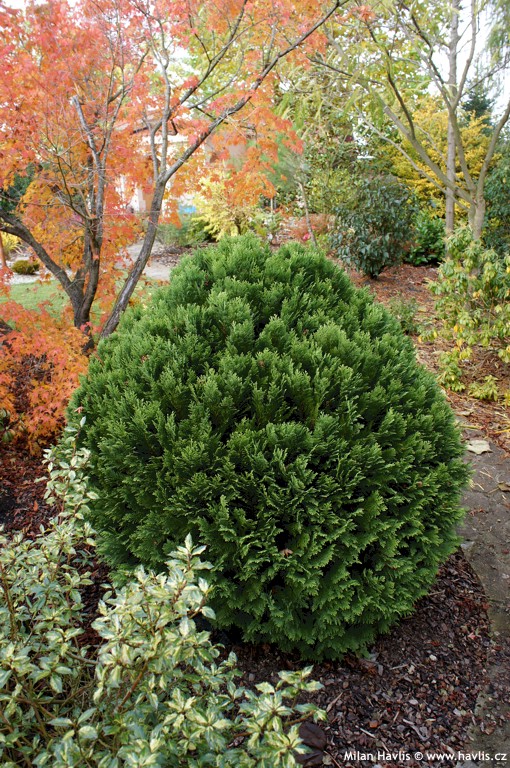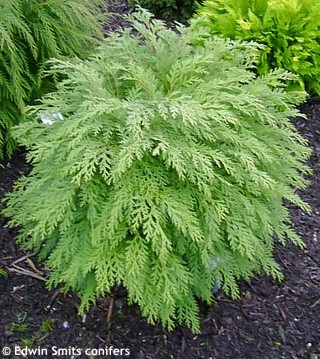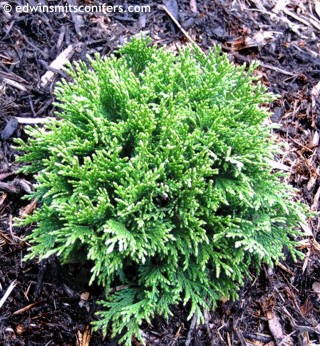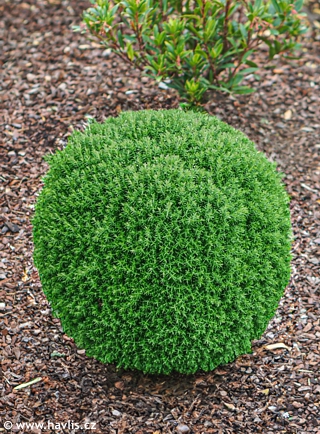Chamaecyparis lawsoniana 'MINIMA GLAUCA' Lawson cypress
Chamaecyparis
Lawson cypress is native to northwestern America, from Oregon to northern California. It was first discovered by European Americans near Port Orford, Oregon, and was introduced to horticultural market in 1854. It was described by the Scottish botanist Andrew Murray (1812-1878) and named after another Scottish botanist and merchant, Charles Lawson (1795-1873), who became famous by importing new plant species from America to Britain. This cypress tree was one of his discoveries. It is a hardy, evergreen conifer with soft, scale-like needles. Perhaps all over the world in temperate climates, it is widely planted in gardens and parks and is popular for its variability. There are many colourful varieties that brighten up compositions of dark green shrubs and trees and perform also in decorative outdoor containers.
Many garden enthusiasts purchase small plants so that in 10-15 years they can show their friends and fellow-gardeners how well it has done since comparing the existing plant with old pictures. It is not boasting, it is the typical gardener’s pride. The thing is that when it is some 10-15 years old it can really look very attractive giving away the age with density. So choose this beauty a perfect spot in your garden where it will complement other plants nearby.
Ultimate size is 1-1.5m (tall and wide). It is not supposed to be pruned as we are happy for every centimeter it makes. But if you dare you can shape it. False cypress prefers moist but well-drained, slightly acidic soil but is adaptable to almost all types of soil. Grow it in full sun or half shade either in a garden bed or in an outdoor pot. Fully hardy to -28°C (USDA zone 5).
Last update 23-07-2011

































